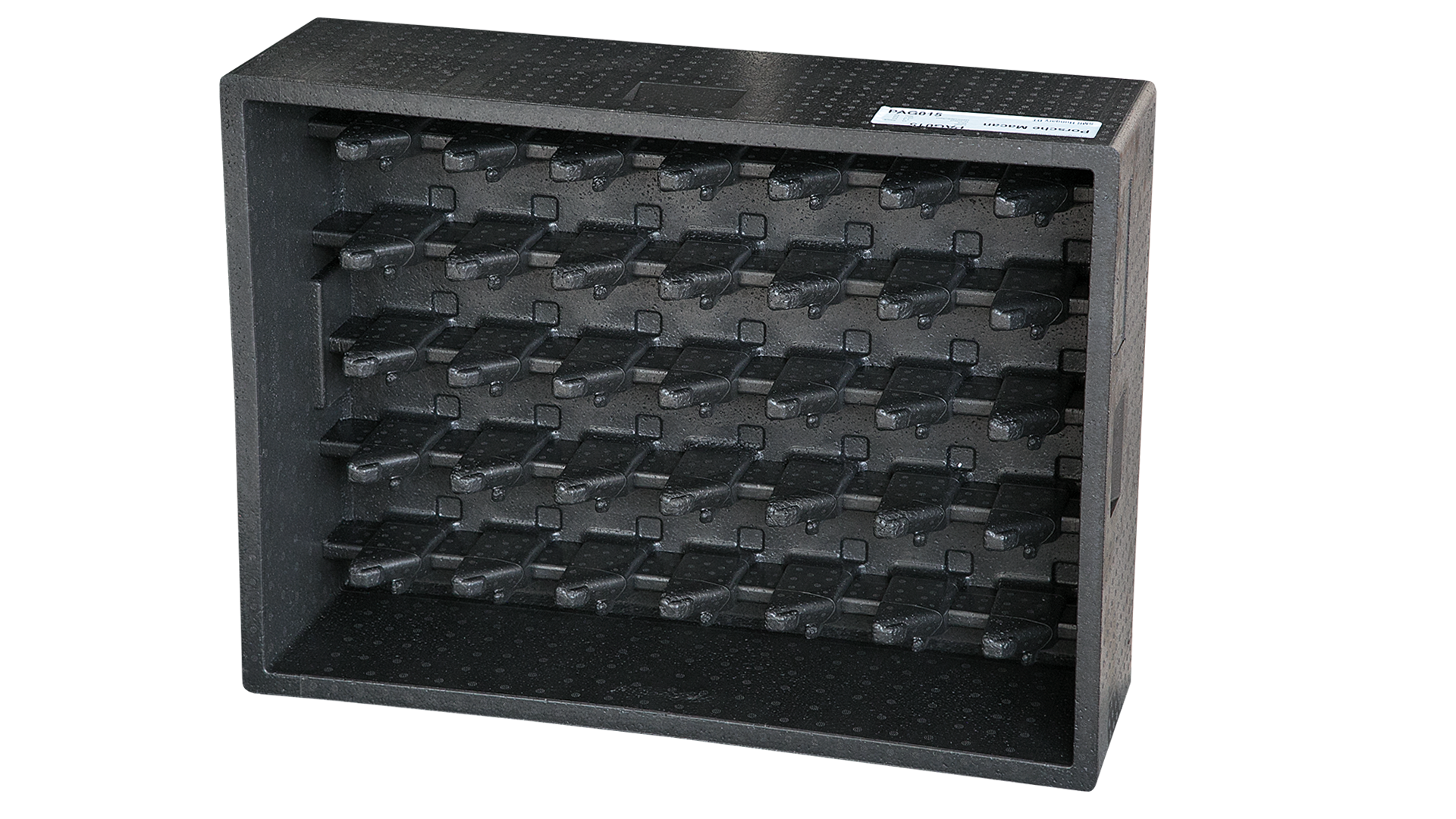
Plastics have accompanied the automotive industry almost from the beginning. They revolutionized cars and made them lighter, safer and more comfortable. Today, both the plastics and automotive industries are on the verge of another green revolution that will forever change the way they operate. On the wave of the eco-revolution, bioplastics and innovative plastics from biomass and expanded polypropylene (EPP) post-consumer waste are being increasingly used in modern cars, providing an ideal answer to the need to reduce the carbon footprint of automotive manufacturing and save ever-depleting fossil fuel resources. All this means that these modern plastics are often seen as the green future of the automotive industry.
What are bioplastics?
Bioplastics are sustainable plastics made from renewable raw materials such as vegetable oils, corn starch, sugar cane or substances produced by microorganisms. Unlike traditional plastics based on fossil fuels, they do not deplete limited resources or require energy-intensive processing, which is also associated with reduced emissions of harmful substances and greenhouse gases. Thus, the production of bioplastics is less harmful to the environment. On the other hand, when it comes to disposal, some are biodegradable, and some can remain in nature for a long time just like synthetic plastics, so they should also be recycled.
What are the types of bioplastics?
Bioplastics are a very heterogeneous group of materials. They are divided into several types, depending on the raw materials used in their production and the properties they possess. Some are biodegradable, meaning that they can be broken down by natural organisms such as bacteria and fungi. While others, despite being made from renewable raw materials, are not biodegradable. Persistent bioplastics can include, for example, bio-PET or bio polyethylene, while biodegradable ones include polylactide, polybutylene succinate and polyhydroxyalkanoates.
Cellulose-based bioplastics
One of the most promising raw materials for the production of bioplastics is cellulose, which is present in all plants. The bioplastics produced from this material are based mainly on cellulose esters (nitrocellulose) and their derivatives, such as celluloid. The natural polymer is not only easy to process and obtain, but also allows the production of a plastic with relatively good mechanical and thermal properties. In addition, it shows excellent biodegradability – it can decompose by up to more than 40% in just a few days.
Starch-based bioplastics
Starch-based plastics are another popular group of bioplastics. They are biodegradable and inexpensive to produce – starch is abundant in many plants, such as potatoes, corn and tapioca. The production process for bioplastics made from such materials involves plasticizing it and combining it with other polymers or biopolymers to improve its flexibility and processability. Starch-based bioplastics are used in a wide range of applications, such as disposable packaging, shopping bags and disposable dishes.
Aliphatic bioplastics
These are bioplastics produced from aliphatic polyesters extracted from biomass derived from a variety of sources, such as agricultural raw materials rich in carbohydrates (potatoes and corn), lignocellulosic materials, i.e. wood and plant stems, as well as organic waste. As a result of complex biochemical processes carried out in biorefineries, chemical compounds are obtained from biomass, from which biobased polymers are then synthesized. Despite their organic origin, aliphatic bioplastics require more energy in the production process and are biodegradable only in some cases.
Bio-derived polyethylene
Bio polyethylene (BIO PE) is a type of bioplastic that is partially made from plants, such as sugar cane or corn. It is a modern alternative to traditional polyethylene that is 100% recyclable, but not biodegradable. The material, like its traditional counterpart, is ideal for packaging and contains no bisphenol A or other harmful substances. The production of bio polyethylene reduces carbon dioxide in the atmosphere (3.09 kg of CO2 for every kilogram of BIO PE eco-plastic), as sugarcane and corn produce oxygen during the growth phase.
Polyhydroxyalkanoates (PHAs)
Polyhydroxyalkanoates, also known as PHAs, are polyesters produced in nature by numerous microorganisms, including through bacterial fermentation of sugars or lipids. They are biodegradable, making them a sustainable alternative to conventional plastics, both thermoplastics and elastomers (with melting points ranging from 40 to 180°C). They are used in a wide range of applications, from packaging to implants and artificial tissues.
Polyamide 11
The plastic, also known as nylon 11, is a type of polyamide made from undecylenic acid, which is extracted for example from vegetable oil. This thermoplastic polymer is particularly important in industry due to its high mechanical strength, resistance to extreme temperatures, chemicals, UV radiation, and lightweight. In the automotive industry, it is used for fuel lines, fuel tanks or cable and housing insulation.
Polylactide (PLA)
Polylactide or lactic acid is extracted from raw materials such as cornmeal and sugar cane. It features high tensile strength, stiffness and ease of molding at an affordable price, and is compostable and biodegradable. It has comparable characteristics to polystyrene or polyvinyl chloride, though inferior to PP, yet its properties can be improved by other means. In the automotive industry, it is used for floor mats, panels and coverings.
Bioplastics and sustainability
The use of bioplastics has many environmental benefits. First of all, their production is less energy-intensive and involves fewer greenhouse gas emissions than the production of traditional plastics. It is assumed that when bioplastics decompose, they release as much carbon dioxide as was absorbed during the growth phase by the plant from which they were produced. Bioplastics are often biodegradable, meaning that they can be safely disposed of at the end of their life. Also of great importance is the fact that they are made from renewable sources, reducing the economy's dependence on fossil fuels, a resource with limited availability. However, it is worth remembering that bioplastics are not a one-size-fits-all solution to all the problems associated with traditional petroleum-based plastics. Not all of them are biodegradable, their manufacture or refinement sometimes requires complex chemical processes.
Applications of bioplastics in the automotive industry
Today in the automotive industry, bioplastics are used in many areas of car manufacturing – from interior components through electronics to engine components and body parts. Manufacturers are constantly looking for new, innovative solutions for plastics based on renewable raw materials, improving their properties – both physically and chemically, as well as environmentally. High-quality biopolymers can already be found primarily in car interiors, such as upholstery fabrics, door panels, dashboard components, trunk linings and headliners. Some automotive companies are already using bio-based polyesters, bio-based PET and PLA blends in significant quantities for plastic injection molded automotive components, mainly interior, trim or electronics parts. Knauf Industries is already producing parts from sustainable foamed plastics.
rEPP and NEOPS – a sustainable alternative to bioplastics
Examples of green alternatives to traditional plastics that are making a significant impact on the sustainability of the automotive industry include the rEPP (recycled expanded polypropylene) and NEOPS (new environmentally friendly polystyrene). They are special kinds of EPP (expanded polypropylene) and EPS, respectively, which are widely used in automobile manufacturing, mainly for comfort and safety components in modern vehicles, such as seat and bumper components.

NEOPS® is a new foam material created within the cooperation between raw material suppliers and Knauf Industries' ID Lab. It is produced in accordance with the biomass balance concept. The technical properties of NEOPS® are identical to or even better than those of traditional polystyrene foam, but it leaves a smaller carbon footprint. The raw materials necessary for the production of traditional polystyrene have been replaced with renewable materials. NEOPS® is derived from non-food resources (green waste) according to the Mass Balance method. The material has received REDcert certification and sets a new standard related to the use of sustainable biomass in the chemical industry. Greenhouse gas (CO2) emissions can be reduced by at least 30%*. Various grades of the material are available, such as those with improved heat resistance, fire resistance or shock absorption. Neops can be applied in transport packaging applications, mainly in one-way packaging. With boxes made from Neops automotive components can be safely transported between various Tier suppliers. The material is lightweight and can be freely customized to the shape of the parts.
Equally noteworthy is rEPP (made from EPP post-consumer waste), which is partially recycled and retains all the properties of the base material. Since this innovative material is 100% recyclable, it can be reprocessed and used to produce new ultralight foamed plastic components without loss of quality. It is applicable in the same production areas as traditional EPP, while being a component of the closed-loop economy and thus helping to reduce the the need of feedstock in the process of foamed plastic molding. REPP is used in returnable packaging applications for logistics flows in automotive industry. Shuttle trays made from this material guarantee secure transport of fragile parts. Recycled EPP preserves its shock-absorption properties as well as the so-called shape memory hence it is a perfect fit for long-term returnable solutions.
In conclusion, bioplastics as well as sustainable alternative materials from recycled plastics and biomass have already started the next revolution in the automotive industry, introducing more sustainable manufacturing practices, reducing the industry's dependence on non-renewable raw materials and "closing" the cycle of materials. The automotive sector is definitely moving toward a green future, and bioplastics can play a key role in this transformation. However, further research and development are still needed to realize the full potential of biopolymers and ensure that they are completely safe, economically efficient to produce and planet-friendly throughout their life cycle.
* It depends on very specific criteria when calculating. Please contact us for more information.